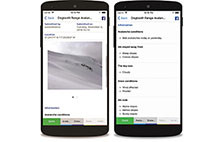Instructing in Avalanche Terrain – Basic Module (Field)
This field course enables students to acquire the pedagogical and risk management skills needed to teach recreational courses in simple terrain (“Avalanche Skills Training 1 (AST1)” and “Companion Rescue”). Key objectives include terrain identification, group management and compliance with the Guidelines for Instructing in Avalanche Terrain (GIAT).
- Avalanche Operations Level 1 ;
- Online courses Teaching in avalanche terrain – Fundamentals ;
- Must be 18 years of age or older;
- Advanced backcountry skiing or splitboarding experience and good physical fitness: know how to use your alpine touring equipment (bindings, skins and skis/splitboard), be able to travel in variable conditions and over diverse terrain (such as deep snow, brittle crust, wind slabs and dense trees) while carrying a backpack ;
- It is strongly recommended that you have attended at least one AST course before taking the “Instructing in avalanche terrain – Basic” field course.
Objectives
- Implement pedagogical strategies for teaching recreational avalanche safety courses ;
- Applying risk management tools to teach recreational avalanche safety courses;
- Demonstrate the use of the decision-making tool in an introductory avalanche safety course (CSA1);
- Demonstrate appropriate travel procedures in EETA-rated terrain;
- Effective verbal communication.
What to expect
This course takes place over three days and requires prior work consisting of reading and preparation to teach the modules of the Avalanche Canada training program. Completion of the preparatory work will provide a solid foundation, enabling advanced topics to be covered in greater depth during the field sessions. In order to optimize the learning experience, an end-of-day preparatory assignment will be required, i.e. preparation of the next day’s excursion plan.
A sample timetable for this course gives an idea of how each day will unfold. Course days are long, and it’s the student’s responsibility to take care of his or her personal needs. This includes food, drink, appropriate clothing and making sure you’re well rested and ready to learn. There are no meal breaks. Participants must be prepared to eat and drink throughout the day.
The “Instructing in Avalanche Terrain – Basic” course is a mix of classroom and field learning. Students will alternate between indoors and outdoors each day.
Language
The course will be taught in French in Quebec. However, readings, exercises and videos will be in English only. Some decision-making tools, student resources and avalanche terrain teaching guidelines (DETA) are available in French. Bilingual instructors will be able to help you with technical terms and their equivalents in both languages.
Equipment
At the time of registration, an e-mail will be sent to the student with logistical details of the course, announcing times and locations. A detailed list of required materials outlines the essentials for the course. Participants should be prepared to deliver effective field sessions.
ASSESSMENT
Participant evaluation is divided into five categories: trip planning, teaching AST1 lessons, field identification, group management and field notebook. Students will receive grades based on the following criteria: below standard (<70%), standard (70% – 85%) and above standard (86% – 100%). A grade in line with the standard is required to obtain the “Instructing in avalanche terrain – Basic” course certificate.
Registration
February 25 to 27, 2026 in the Chic-Chocs, in French.
12 places are available. (If the course is full, we strongly encourage you to join the waiting list).
Price: $1,410, accommodation available in nearby huts ($), contact Avalanche Québec for details.
A 50% partial payment option is available at the time of registration. The final payment must be made 45 days before the start of the course.
Any questions?
If you have any questions about the Avalanche Search and Rescue 2 course (price, date, location, etc.), please contact the Canadian Avalanche Association (studentservices@avalancheassociation.ca), please.



